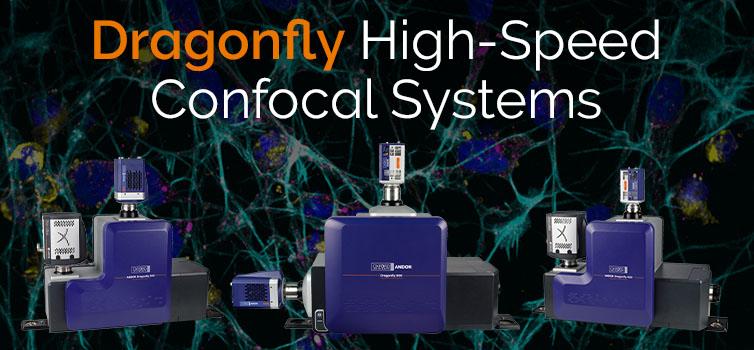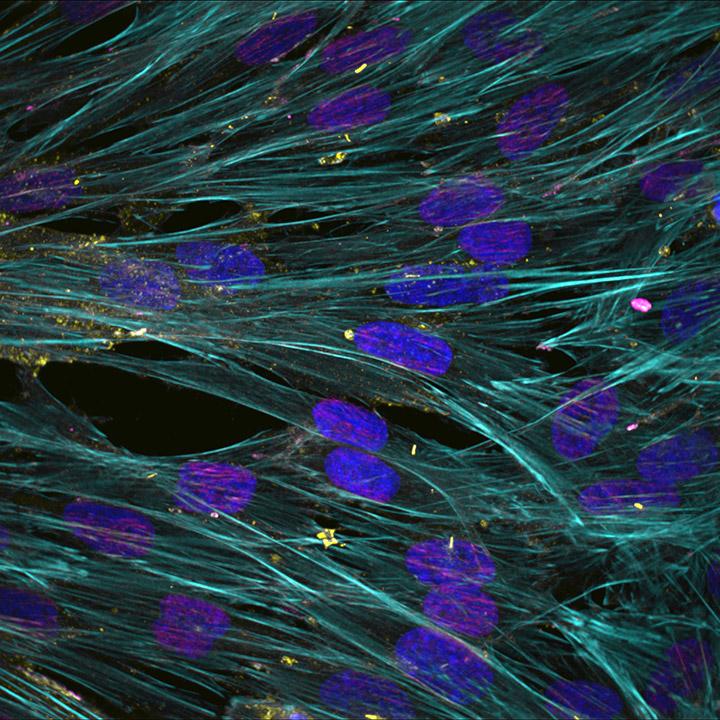31 Jul
Expanding the Dragonfly Series – Imaging Excellence and Modularity in High-end Confocal Microscopes
Oxford Instruments Andor, a world leader in scientific imaging solutions, today announces the launch of Dragonfly 400 and new VLE (Versatile Laser Engine), further expanding the award-winning Dragonfly confocal microscopy portfolio.
The expansion of the range, which now comprises Dragonfly 200, 400 and 600, provides life science researchers and industry partners with tailored solutions that fit the needs of a broad range of users.

The Dragonfly 200 series offers speed, sensitivity and excellent confocal imaging, making it an ideal system for a wide range of applications, including live cell imaging, development biology, neurobiology, and cancer research. The Dragonfly 200 delivers high-performance spinning disk confocal imaging of all (thick, thin, fixed and live) biological samples. High-resolution image stacks are ready for analysis in mere seconds.
The upgraded model adds new capabilities including the new VLE (Versatile laser engine), which allows seven laser lines in a single chassis and up to 10 lines in dual chassis mode, giving researchers the capability to choose more fluorophores for their experiments as well as increasing labelling options on a single experiment. Furthermore, the Dragonfly series is built with modularity in mind, allowing Dragonfly 200 systems to be upgraded to the new Dragonfly 400 model in the field.
The new Dragonfly 400 series builds on the key features of the Dragonfly 200 by adding the established HLE (High Power Laser engine) and the 3D-Super Resolution Module. With the Dragonfly 400 series and the high-power laser engine (HLE), the system becomes ideal for an even wider set of research applications. The HLE delivers enough power for super-resolution applications (SMLM) with DNA-PAINT. A single plane image through the 3D super-resolution module delivers axial information over an ~1 μm range with a corresponding axial resolution down to 30 nm. The high-power lasers of the HLE deliver an increase in productivity over the Dragonfly 200 series, allowing even higher productivity in time-consuming applications, such as spatial omics applications and large sample imaging.
For the ultimate range of imaging applications, users have the option of choosing the Dragonfly 600 series with Borealis-TIRF and Zoom Illumination optics imaging functionality to make a complete multi-modal system for widefield, Confocal, TIRF, and SMLM (DNA-PAINT & dSTORM) applications. Dragonfly 600 has achieved impressive resolutions down to 6 nm (DNA-PAINT) and allows SMLM in any imaging modality (confocal, widefield, or B-TIRF).

New Dragonfly 200 innovations include the VLE and the upgradability to Dragonfly 400 model.
New Dragonfly 400 innovations include the HLE and the 3D super-resolution module.

Fixed Cilated Retina Pigmented Epithelial cells (RPE) showing 5 color imaging of cilia and plasma membrane (green), nuclei (blue), myosin (orange), Exo70 (red) and actin (cyan). Image courtesy of Dr Felix Rivera-Molina from Cinema Lab at Yale University
Dr Claudia Florindo, Product Manager for Microscopy systems at Oxford Instruments – Andor, said:
“The Dragonfly microscope series is an outstanding imaging platform that can fit the needs of academic and industry researchers, allowing high-end microscopy across every scale on a single microscope platform. A full range of life science applications such as cell biology, neuroscience, developmental biology, cancer biology, spatial omics, and others are all possible using the Dragonfly.
The expansion of the Dragonfly confocal imaging portfolio allows researchers to accurately match high-end microscopes to their research needs. Live imaging, deep sample imaging, large-scale multiplexing microscopes and super-resolution SMLM applications are all delivered with unique quality and speed with the Dragonfly.”

